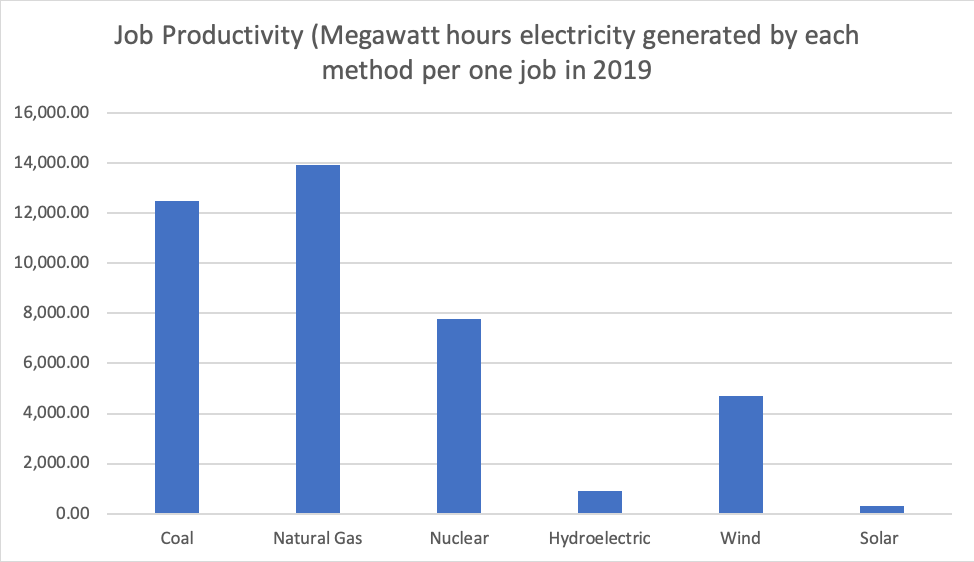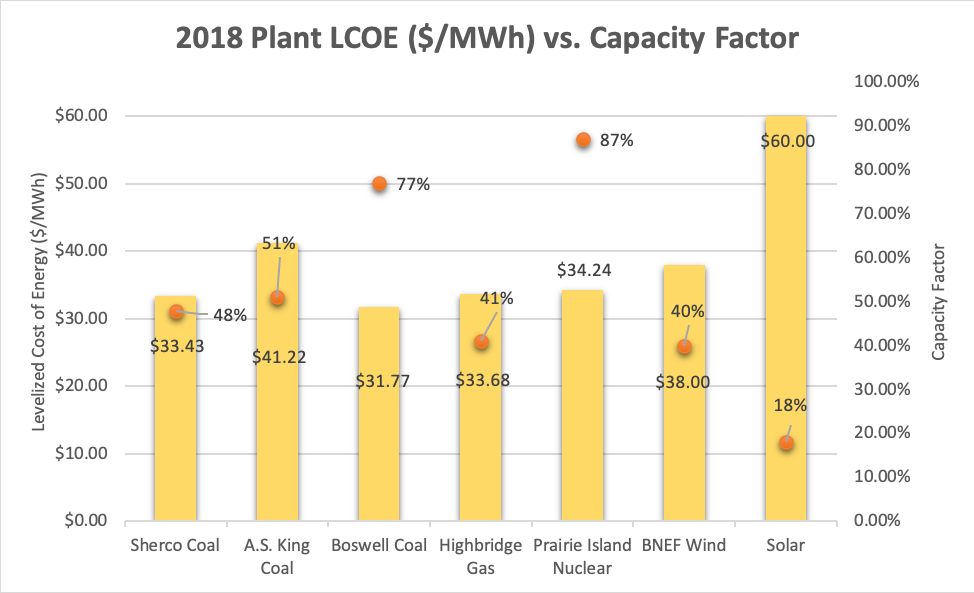Energy jobs report shows that “clean energy” is all about creating unproductive jobs
Clean Energy Economy Minnesota
Year after year The CEEM (Clean Energy Economy Minnesota) continues to hail the potential of the “clean energy” sector to produce and grow jobs. Last year, CEEM praised the “clean energy” sector for employing 61,047 Minnesotans in 2018. CEEM also praised the state`s “clean energy” sector for adding 2,700 jobs between 2017 and 2018 — growing more than 2.5 times faster than overall job growth in the state which was 1.9%. This is all according to the 2019 US Energy Employment Report (USEER).
Now the 2020 US Energy Employment Report is out, and the numbers are the same. And as expected, employment in the Minnesota “clean energy” sector has slightly grown between 2018 and 2019. But these numbers only paint a rosy picture about the impact of “clean energy” for the Minnesota economy and overall employment. With deeper analysis, we see that “clean energy “employment is highly inefficient for a number of reasons.
“Clean Energy” jobs are not highly productive
CEEM boasts of the high employment numbers in “clean energy”, but these numbers have to be taken in context. What matters in the energy industry more than producing employment is making sure energy is being produced as efficiently as possible to lower costs and provide lower rates to consumers.
Looking at job productivity gives the idea that renewable electricity generation is not as efficient as traditional electricity production. In 2019, the Solar Electric Power Generation (EPG) sector employed more people Coal, Natural Gas, and Nuclear EPG sectors combined. But solar only surpassed Hydroelectric in Megawatt electricity hours generated. Moreover, both coal and nuclear sectors each produced more electricity than both solar and wind combined.
| Megawatt hours of electricity generated (2019) | Employees in sector (2019) | |
| Coal | 18,206,000 | 1,458 |
| Natural Gas | 10,372,000 | 745 |
| Nuclear | 14,105,000 | 1,814 |
| Hydroelectric | 887,000 | 971 |
| Wind | 11,040,000 | 2,352 |
| Solar | 1,614,000 | 4,927 |
To make a better comparison we calculate how many megawatt hours of electricity each method of electricity production generates. It turns out coal, natural gas and nuclear electric production are the most efficient electric energy production methods.
Coal produces more than 2 times the number of megawatts hours of electricity that wind produces. And Solar energy produces the least amount of electricity per one job. In short, it requires much more workers to produce “clean energy” than it does using fossil fuels; “clean energy” is inefficient and costs Minnesotans money.

Source: 2020 US Energy Employment Report
Most “clean energy” jobs are temporary and have little to do with energy production
The energy sector is there to produce energy. Therefore, it is only normal that the majority of jobs in “clean energy” be about energy production. And for these jobs to be counted as having an impact on the economy, they have to be long-lived. But that’s not the case with the “clean energy” sector.
The majority of jobs in “clean energy” are temporary construction jobs that should not be counted as part of energy jobs because their overall impact on Minnesota`s economy is very short-lived. According to CEEEM, only less than 1% of jobs in the clean energy sector are in utilities and about 90% of jobs are in construction, manufacturing, trade, and professional services. Employees in manufacturing and construction do not spend their full time working on energy-related services.
The energy efficiency sector
Let us for instance look at Minnesota`s growing Energy Efficiency sector which employs the most people in the “clean energy sector”. In 2019 Efficiency employed 47,518 employees, but what kind of jobs do most of these people do?
They manufacture ENERGY STAR-rated appliances and install efficient lighting systems; tweak traditional heating, ventilation, and air conditioning (HVAC) systems; build renewable heating and cooling systems and handle advanced building materials. Other jobs employ people who develop software and contractors who diagnose, adjust, and verify HVAC efficiency.” ~ CEEM
All of the above-mentioned jobs are not in energy production; they are random manufacturing, construction and maintenance jobs that would exist without clean energy mandates. Minnesota generally has a national below average reliance on natural gas but a third highest ratio of efficiency spending on energy revenue in the Midwest.
In fact, energy efficiency spending rose 22% from 2013 through 2017 in Minnesota. Energy efficiency jobs should not be counted as clean energy jobs, nor should they be costing the state and people money.

Source: 2020 US Energy Employment Report
“Green energy” is highly subsidized
Studies show that natural gas is becoming cheaper and cheaper. Clean energy on the other hand, especially solar and wind turbines, rely on subsidies and incentives to break even for consumers. Still even with these incentives, wind turbines and solar panel installations are driving up residential energy costs.
And like most “clean energy” jobs, the majority of jobs in solar and wind are in construction and not actual energy production. And these construction jobs are temporary and will require mandates to sustain. Wind and solar drive up the cost of electricity, and higher electricity costs destroy jobs, especially in energy-intensive industries like farming, manufacturing, and mining.

Conclusion
We could employ a lot more people in farming if we mandated the use of horses for agricultural labor (and horses, too), but this would lead to a drop in productivity and make everyone worse off. But this is being done in the energy sector by utilizing energy sources that are less productive than traditional generating assets.
All these jobs being lauded do not reflect the growth of a new productive sector of the economy, rather they reflect government-imposed inefficiencies that are driving up costs. Moreover, most of the jobs touted by renewable energy special interest groups are in the energy efficiency sector, but these jobs would exist without Minnesota’s mandates for wind and solar.
It makes no sense to use these job numbers as justification for more renewable energy mandates that will drive up the cost of electricity and destroy more jobs than they create.